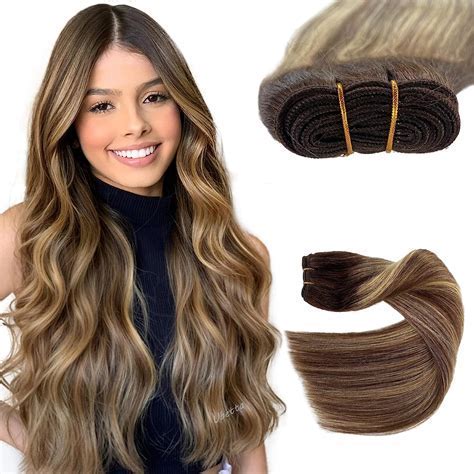Introduction
Hair plays a significant role in our personal appearance and confidence. It enhances our facial features, frames our faces, and conveys our style and personality. While some are fortunate to have healthy, voluminous hair, many others face issues such as hair loss, thinning, or damage. This is where wigs come into play, offering a transformative solution to achieve the desired hair appearance. This article delves into the fascinating world of hair and wigs, exploring their types, benefits, and applications, as well as providing step-by-step instructions for wig application and maintenance.

Chapter 1: The Science of Hair
Understanding the Structure and Biology of Hair
Hair is a complex and fascinating biological structure composed of protein, primarily keratin. It consists of three main layers:
- Cuticle: The outermost layer, made up of overlapping scales that protect the hair shaft.
- Cortex: The middle layer, which provides strength and elasticity.
- Medulla: The innermost layer, consisting of loosely arranged cells.
Chapter 2: Hair Loss and Thinning
Common Causes of Hair Loss
Hair loss is a prevalent issue that can be caused by various factors, including:
- Genetics (e.g., male-pattern baldness, female-pattern baldness)
- Hormonal changes (e.g., pregnancy, menopause)
- Medical conditions (e.g., alopecia areata, thyroid disorders)
- Medications (e.g., chemotherapy, anticoagulants)
- Environmental stressors (e.g., pollution, sun exposure)
Types of Hair Thinning
Hair thinning occurs when the hair strands become finer or less dense. It can manifest in different forms:
- Diffuse thinning: Overall reduction in hair density without noticeable bald patches.
- Androgenic alopecia: Gradual hair loss in a specific pattern, usually starting at the temples or crown.
- Telogen effluvium: Temporary hair loss due to a trigger event (e.g., stress, surgery).
Chapter 3: Wigs: A Transformative Solution
Types of Wigs
Wigs come in a wide range of types, allowing for customization to meet individual needs and preferences:
- Full wigs: Cover the entire head, providing maximum coverage and versatility.
- Lace wigs: Feature a transparent lace cap that creates the illusion of a natural hairline.
- Clip-in extensions: Temporary hairpieces that can be clipped into existing hair to add volume or length.
- Toppers: Small hairpieces designed to conceal thinning areas or add volume to the crown.
Benefits of Wearing Wigs
Wigs offer numerous benefits for those experiencing hair loss or seeking a specific hair style:
- Improved Confidence: Hair loss can negatively impact self-esteem. Wigs can restore a sense of confidence by providing the desired hair appearance.
- Versatile Styling Options: Wigs come in various colors, lengths, and textures, allowing for limitless styling possibilities.
- Protection: Wigs can protect the scalp from sun damage, wind, and other environmental factors.
- Medical Benefits: Wigs can help conceal hair loss caused by medical treatments (e.g., chemotherapy).
Chapter 4: Choosing the Right Wig
Factors to Consider When Choosing a Wig
- Face Shape: The shape of your face influences the ideal wig style to complement your features.
- Hair Color and Texture: The wig should match your natural hair color and texture as closely as possible for a natural appearance.
- Lifestyle and Needs: Consider your daily activities and the level of comfort and maintenance required.
- Budget: Wigs can range in price depending on materials, construction, and quality.
Chapter 5: How to Apply and Maintain a Wig
Step-by-Step Wig Application
- Prepare your hair by styling it back and securing any loose strands with pins.
- Place the wig cap over your head and adjust it to fit snugly.
- Position the wig on your head and secure it using clips or an adhesive.
- Style the wig as desired using heat tools, brushes, and hairspray.
Proper Wig Maintenance
- Wash Regularly: Wash the wig every 1-2 weeks using a gentle shampoo and conditioner.
- Condition Deeply: Use a deep conditioner to keep the wig soft and manageable.
- Dry Gently: Air-dry the wig by placing it on a wig stand or using a wig dryer.
- Avoid Heat Damage: Minimize the use of heat tools and avoid excessive heat.
- Store Properly: When not in use, store the wig in a cool, dry place in its original box or on a wig stand.
Chapter 6: FAQs about Hair and Wigs
- Can I wear a wig all the time? Yes, you can, but it’s recommended to remove the wig and allow your scalp to breathe for 8-10 hours every night.
- How long do wigs last? The lifespan of a wig depends on the quality of construction and how well it’s maintained. Human hair wigs can last up to 3 years with proper care.
- Can I color a wig? Most synthetic wigs cannot be colored, but some human hair wigs can be safely colored by a professional.
- How often should I get a wig trimmed? Regular trims are essential to maintain the shape and style of the wig. Aim for a trim every 2-3 months.
- Can I sleep in a wig? Sleeping in a wig is not recommended, as it can put undue stress on the hair fibers and the wig cap.
- How much does a good wig cost? The cost of a wig varies widely depending on factors such as materials, construction, and length. Expect to pay anywhere from $100 to over $1,000 for a high-quality wig.
Conclusion
Hair and wigs play a pivotal role in our lives, affecting our appearance, confidence, and overall well-being. Whether you’re facing hair loss or simply seeking a new look, the vast array of wig options available today offers transformative solutions to meet your individual needs. With careful selection, proper application, and meticulous maintenance, wigs can empower you to embrace your desired hair style and enhance your overall self-image.
